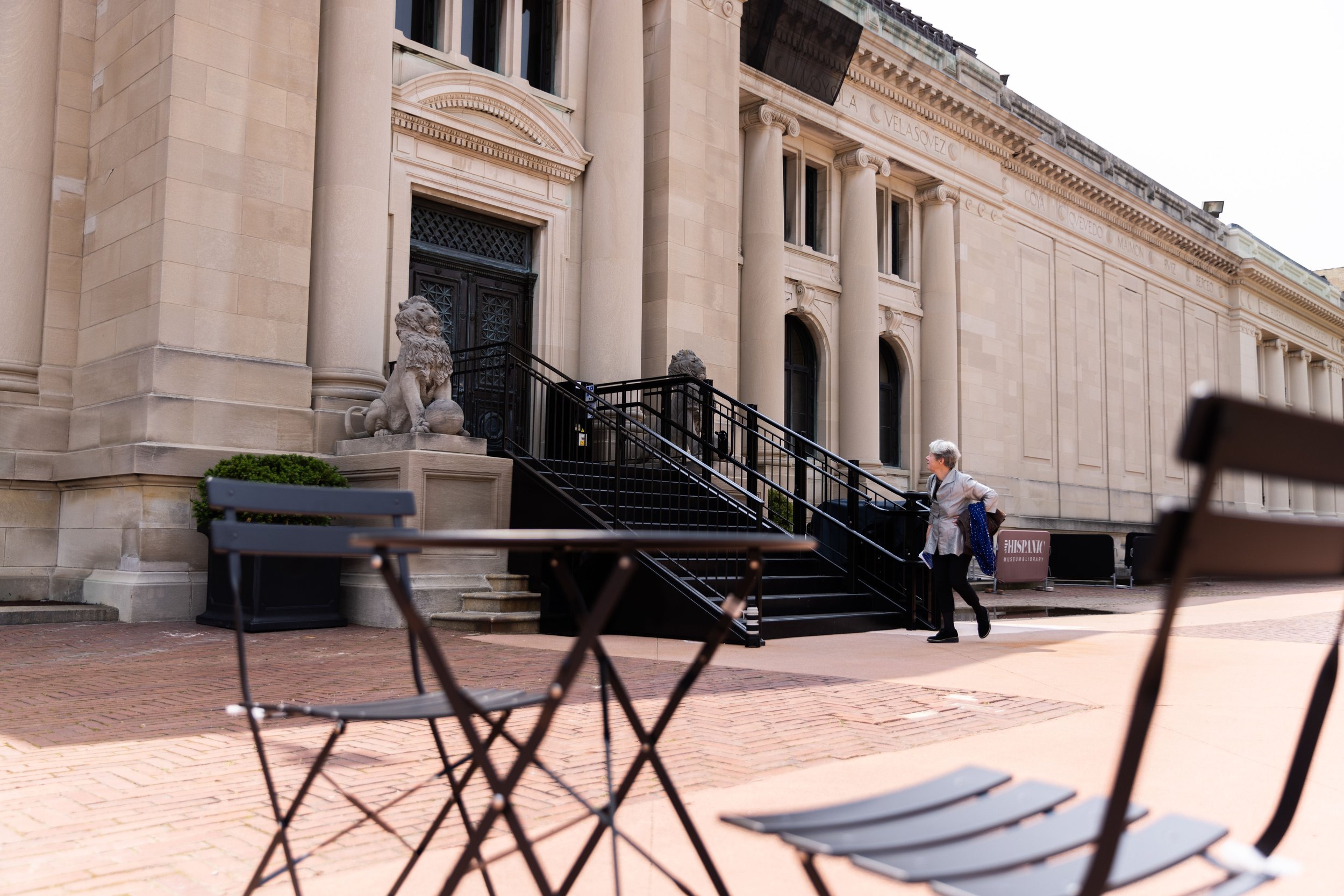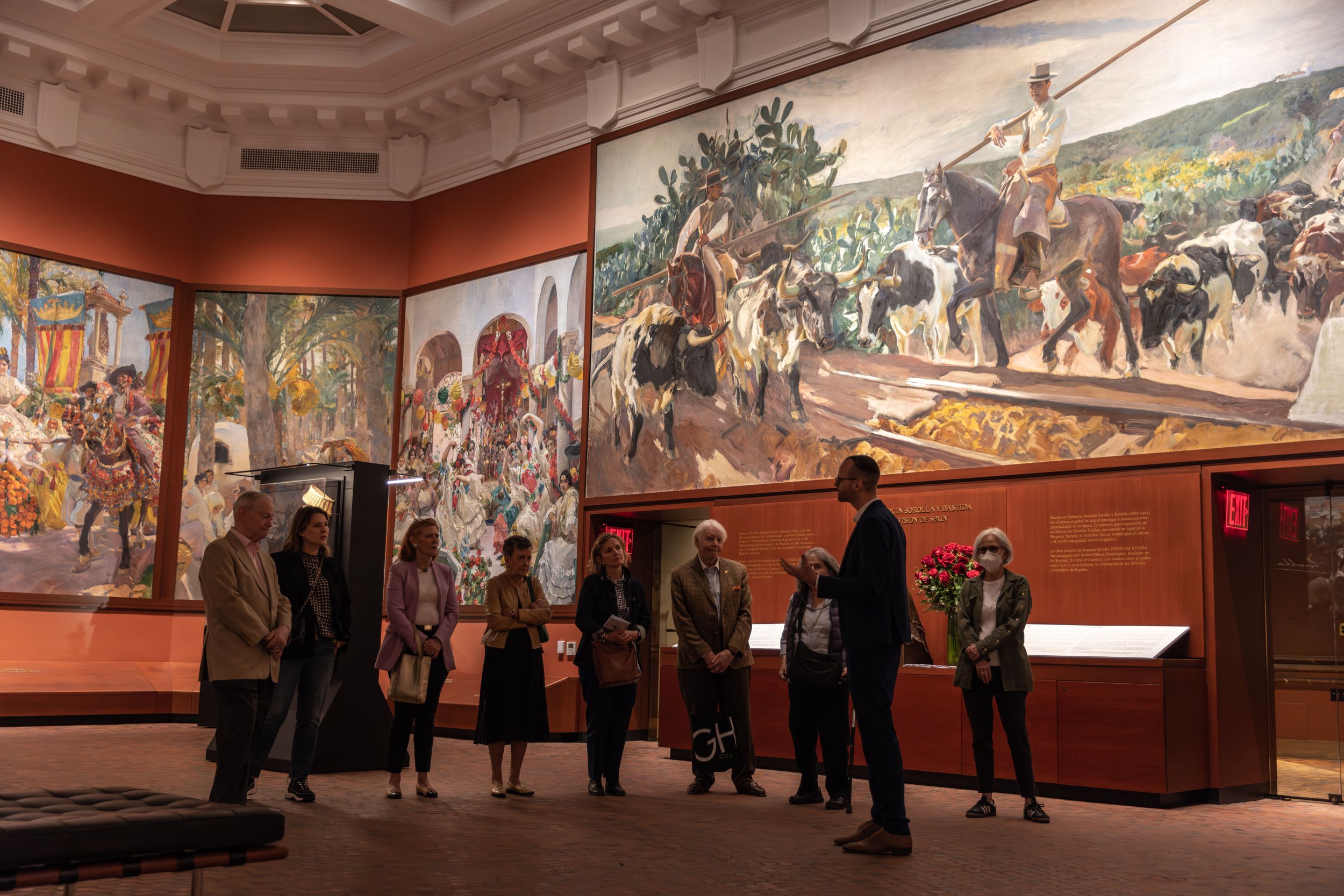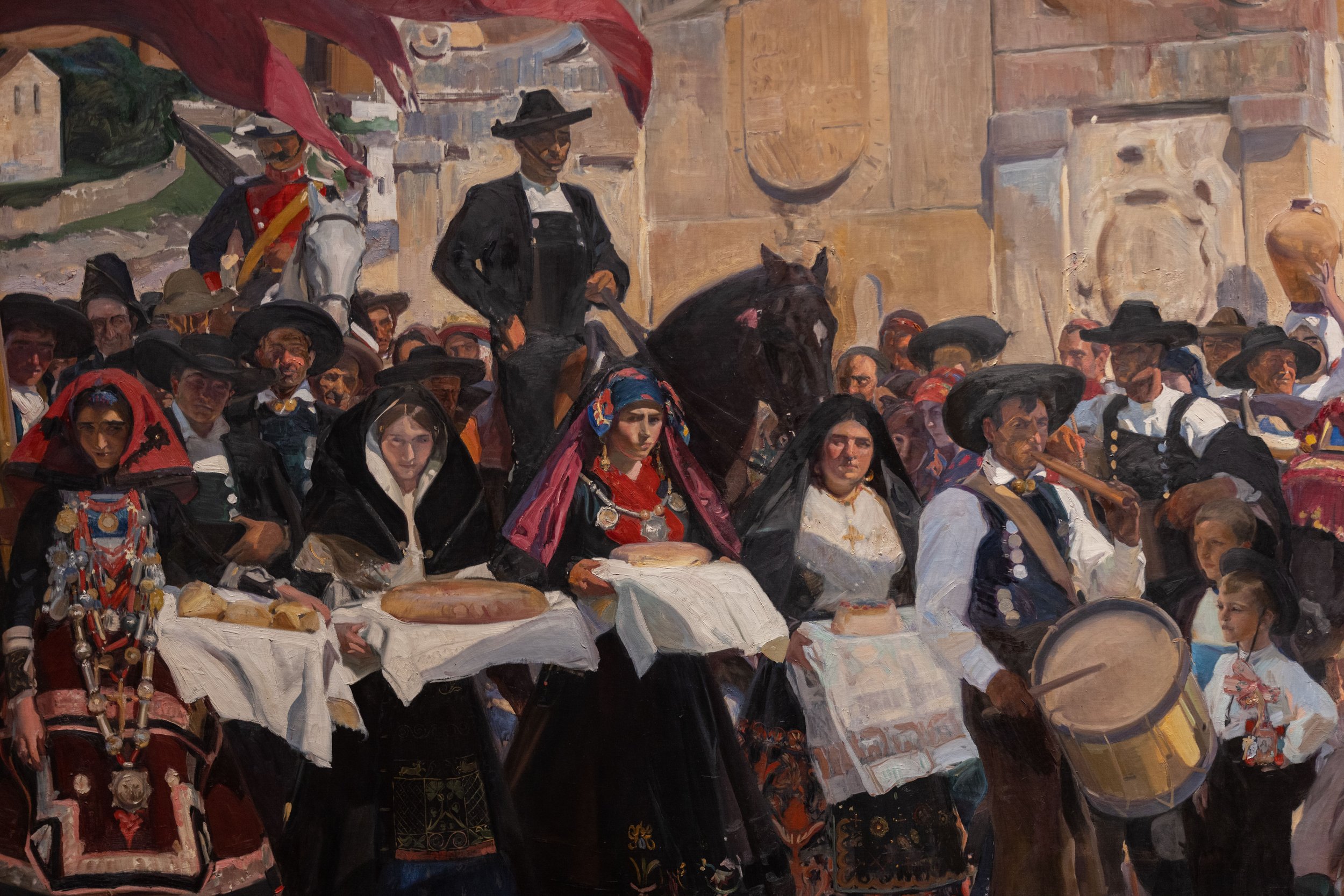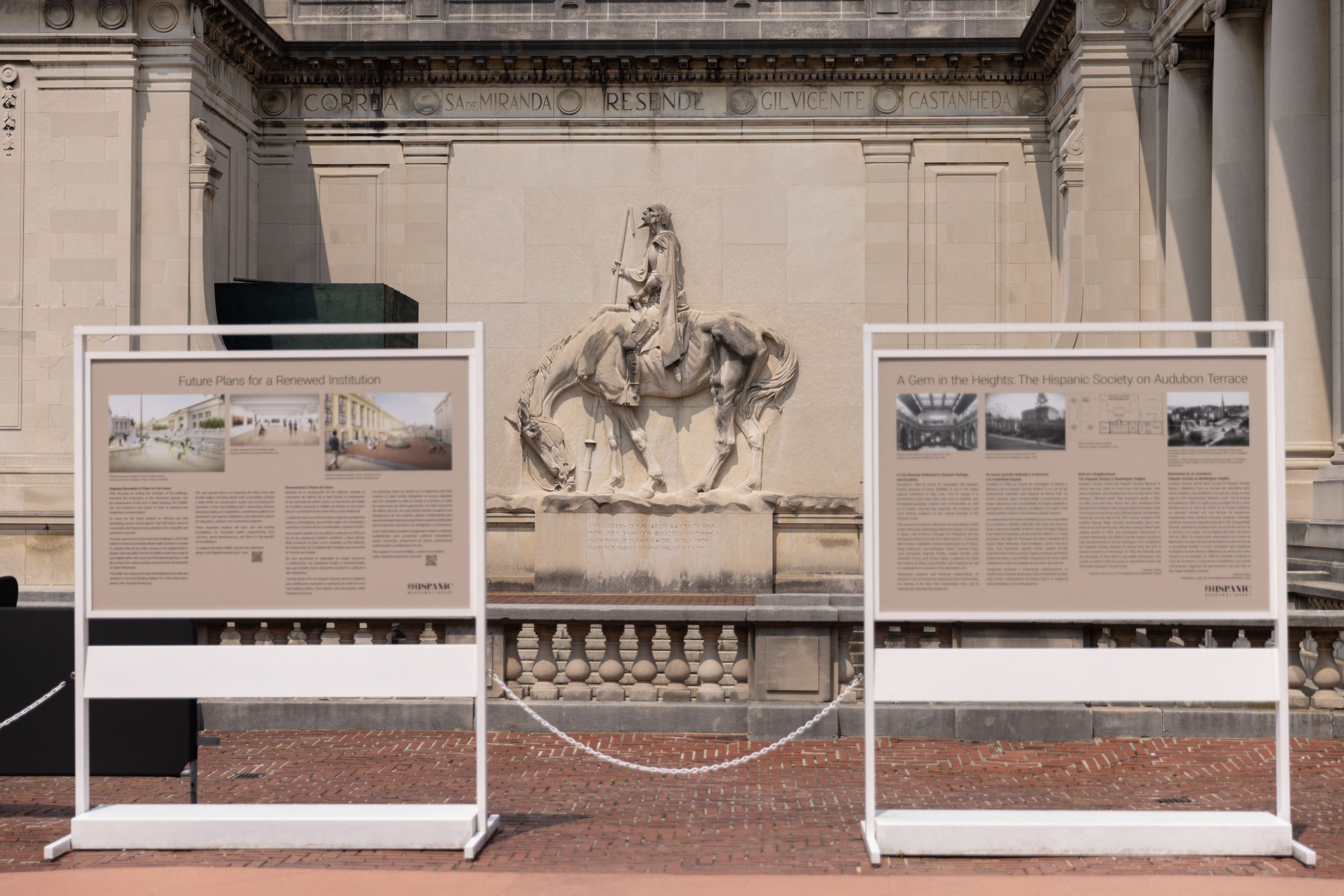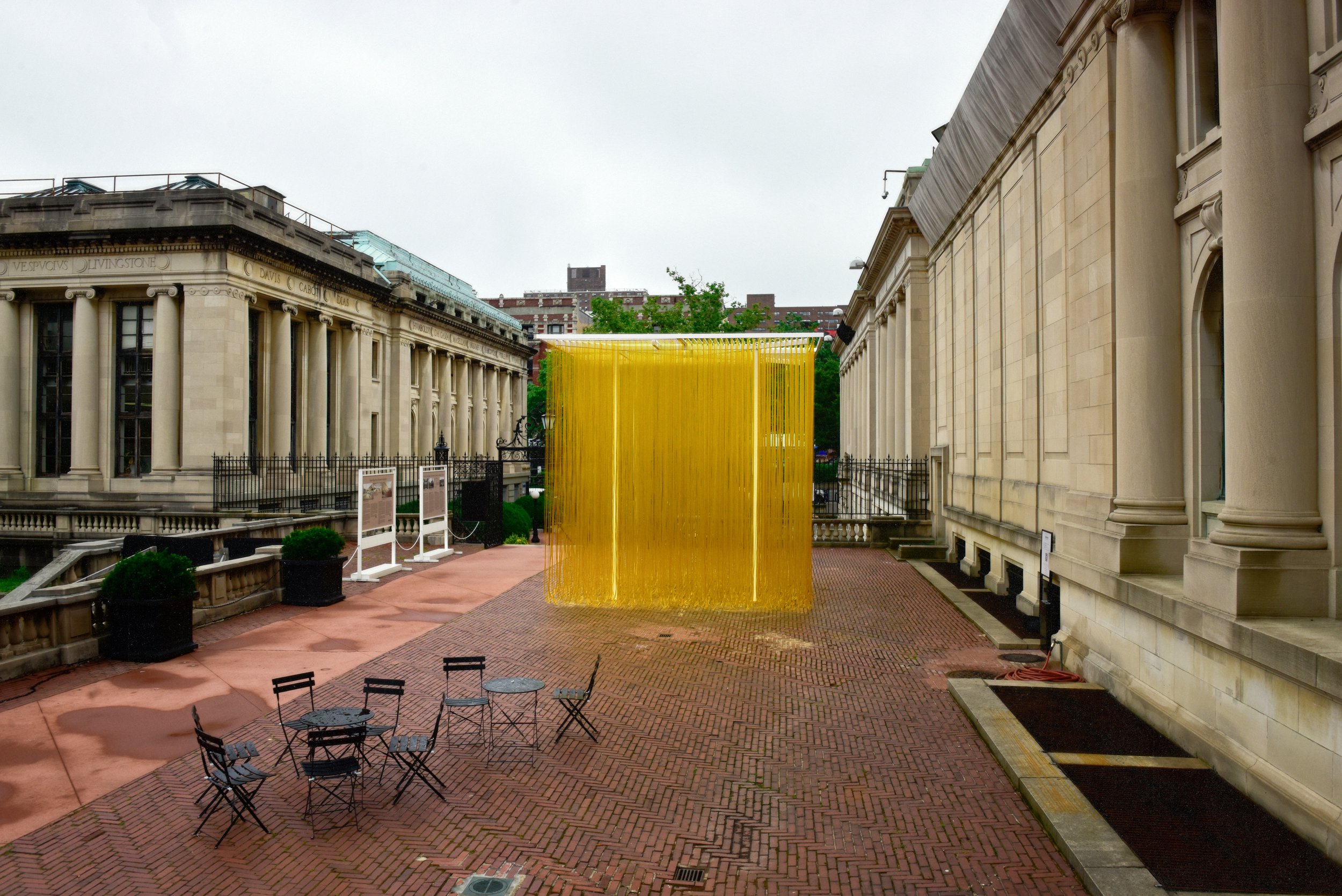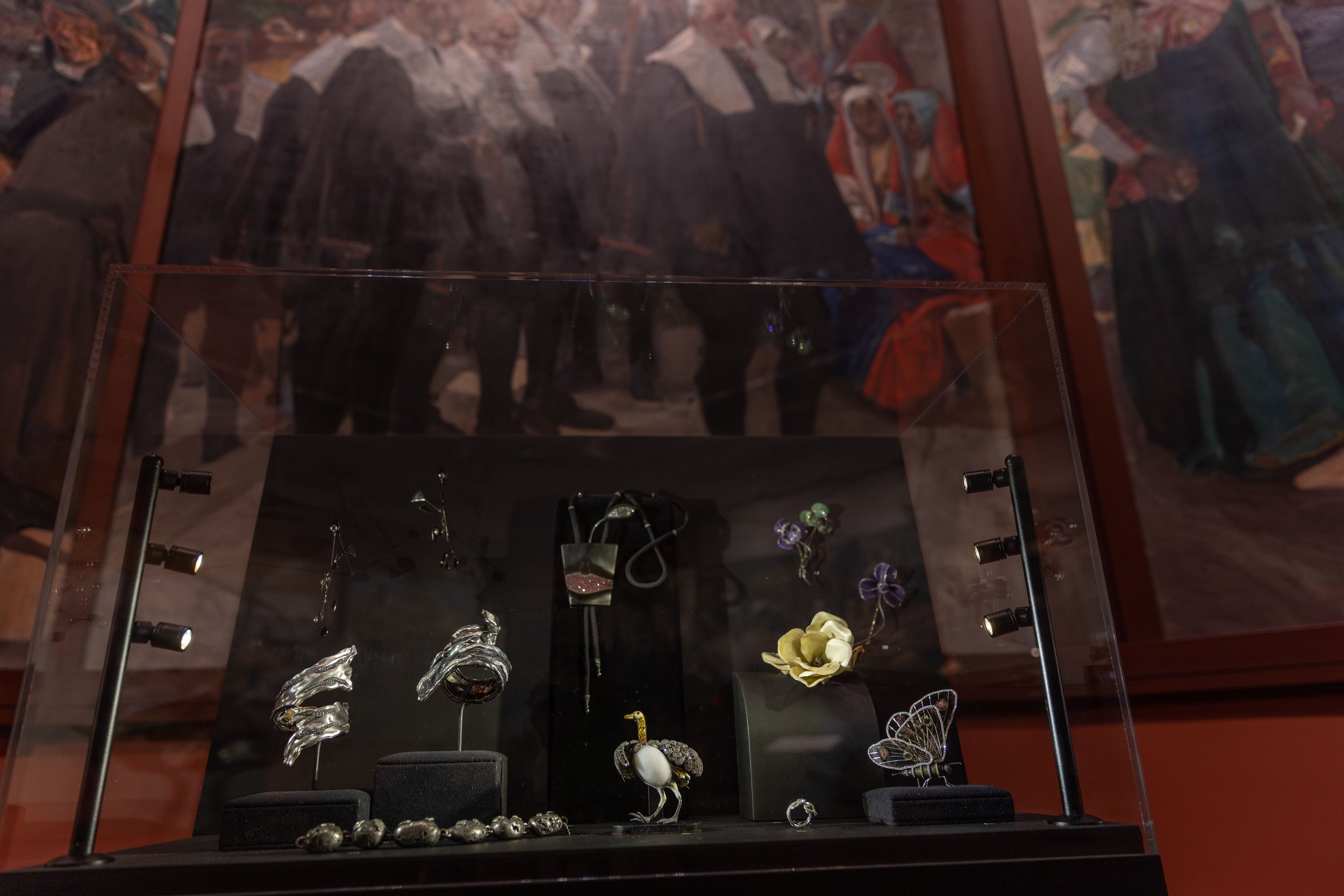THE NEW CRITERION, September 2023
On “1923–2023 Sorolla / Soto Centennials” & “Jewels in a Gem: Luz Camino at the Hispanic Society Museum” at the Hispanic Museum & Library.
The Hispanic Society of America was founded over a century ago to reflect a gilded vision of Spain and the Iberian peoples. Since 1904, this institution on Broadway and 155th Street has faced much harsher realities. The small independent entity—one of scholarly and artistic significance—has struggled so far removed from the limelight of New York’s Museum Mile. To this day the Hispanic Society remains the greatest New York collection few have ever heard of. Now, after a six-year closure to address its aging infrastructure, the museum and library have partially reopened with a renewed vision for the future. Just how much this vision aligns with the foresight of its remarkable founder, Archer Milton Huntington, is a picture still coming into view.
Archer Huntington was the stepson, and most likely illegitimate offspring, of Collis Huntington, one of the Big Four founders of the western railroad. Even more remarkable was his mother, Arabella, a significant collector of European art and a social outcast whose marriage to Huntington scandalized New York society. Arabella’s sense of independence encouraged her only child in his intense cultural pursuits. In 1882, while embarking on a Grand Tour at age twelve, Archer purchased a copy of The Zincali, George Borrow’s 1841 “Account of the Gypsies of Spain,” in a Liverpool bookshop. The book was one of several famous stories that informed the century’s Romantic affinities for primitive Spain—joining Victor Hugo’s Hernani of 1830, Théophile Gautier’s Voyage en Espagne and Richard Ford’s Handbook for Travellers in Spain, both of 1845, and Georges Bizet’s Carmen of 1875.
View of the entrance to the Hispanic Society Museum & Library. Photo: Alfonso Lozano.
As Huntington continued on to London and Paris, he was already envisioning an art collection along the lines of Sir Richard Wallace’s, paired with a library akin to the National Gallery’s, dedicated to the cultures of Spain and the Spanish diaspora. In 1891, to understand better the history of Al-Andalus, he even hired a tutor to teach him Arabic, at a time when no American institution offered classes in the language. On tours through Spain in 1892, 1896, and 1898, he purchased trunks of Spanish photographs while studying the country’s art and culture (the society now has 175,000 such images). In 1902 he acquired the bibliographic collection of Manuel Pérez de Guzmán y Boza, Marqués de Jerez de los Caballeros, who was his mentor. Soon Huntington had the most important collection of Spanish books and manuscripts outside of Spain, a collection growing to two hundred thousand manuscripts and more than three hundred thousand printed books, including over fifteen thousand volumes from before 1700. He paired this collection with paintings by Spanish masters—Velázquez, Goya, Zurbarán, El Greco—which he was determined to purchase only from the international market, so as not to deplete the country’s own cultural patrimony.
Installation view of “Jewels in a Gem: Luz Camino and Jewelry” with Sorolla’s Visions of Spain (1913–19) above. Photo: Alfonso Lozano.
In 1908 Huntington opened his collection to the public in a Beaux-Arts building on Audubon Terrace, so named for being at one time part of John James Audubon’s estate. The building was nearly contemporaneous with Isabella Stewart Gardner’s Venetian vision in Boston’s Back Bay and equally novel, though less flamboyant. As the capstone to the collection, in 1911 Huntington commissioned Joaquín Sorolla to paint a mural of multiple “panneaux” of various Spanish regions, which he installed in its own purpose-built octagon-shaped wing. This impressionistic cyclorama of traditional Spanish culture was called, appropriately, Vision of Spain (1913–19), reflecting Huntington’s own dreamy vision for his new institution.
After Huntington’s death in 1955, there were times when it seemed the lid to his jewel box was bolted shut. When it wasn’t being shouted down as “racista”—as happened to one of its directors in the 1990s while he was chased across Audubon Terrace—the Hispanic Society put little of its energies into its own forward-facing persona. Part of this was an extension of Huntington’s own self-effacing style. “To place one’s name on a donation be it a building or subscription is an artificial and flimsy door to fame,” he once said. “The human race is full of creators, but it is their acts . . . which are interesting.”
Instead, the society continued to focus on scholarship and filling out its permanent collection of books, art, artifacts, and sculpture, in particular from the Spanish New World and Spain’s onetime Pacific colonies. Today the collection has grown to include four-thousand-year-old ceramics from the Bell Beaker culture of the Tagus river estuary, Roman statuary from Seville, Islamic pottery and Alhambra silk, Hebrew manuscripts, a map by Giovanni Vespucci, and Renaissance and Baroque ironwork on up through the Symbolist paintings of Hermenegildo Anglada Camarasa. Last year, as its main building remained shuttered, two temporary exhibitions revealed the great depth of this collection: “Gilded Figures: Wood and Clay Made Flesh,” an exhibition curated by Patrick Lenaghan with his Hispanic Society colleague Hélène Fontoira Marzin, on the history of Spanish polychrome sculpture; and a display at the Grolier Club of highlights from the society’s library, organized by the society’s former director Mitchell A. Codding and the curator John O’Neill. (See “Visions of Spain” in The New Criterion of January 2022.)
Joaquin Sorolla, Detail from Visions of Spain, 1913–19, Oil on canvas, Hispanic Society Museum, New York. Photo: Alfonso Lozano.
By some stroke of historical luck, the venerable but heavy hinges of the Hispanic Society were never forced open against the will of its founder. One could easily imagine the society’s takeover by a larger institution, the breaking of its indenture of trust along the lines of the Barnes Foundation, or, at the very least, a relocation downtown. Many such options were considered at various times in its existence, which in part may account for the deferred maintenance on its Audubon Terrace infrastructure.
Under the leadership of Philippe de Montebello, who was elected chairman of the society’s board in 2015, the institution has instead decided to double down on its Audubon campus. This has first meant upgrading the building’s aging envelope, designed by Charles Pratt Huntington, and bringing its systems, in particular its climate control, up to modern standards. The museum has also developed a strategic plan with Selldorf Architects to renovate the campus with the executive architects Beyer Blinder Belle and the landscape architects Reed Hilderbrand. An adjoining building to the east, originally the headquarters of the Museum of the American Indian, is being incorporated into the Hispanic Society campus, allowing for ada access to the Main Court galleries while introducing a new conservation studio, a wheelchair entrance, and spaces for special exhibitions and education. This longer phase of the project is still tens of millions of dollars and several years away.
View from Audubon Terrace. Photo: Alfonso Lozano.
Fortunately, even with the introduction of a new entrance in the east building, the society says the door of the Main Court will remain unlocked. Since the society is, and has always been, a free institution, Audubon Terrace is well suited to be an open campus with outdoor seating and concessions—and access to its other remaining cultural institution, the American Academy of Arts and Letters, just up the courtyard. “If you are a regular, and you have a ten-minute lunch break,” says Guillaume Kientz, the society’s new director, “and you want to see the Duchess of Alba, you can do that.” The terrace’s program of Spanish-themed statuary—depictions of Don Quixote and El Cid created by Huntington’s remarkable wife, Anna Hyatt Huntington—is also an integral part of the society’s cultural program and best observed from the Main Court landing.
This past summer, the Hispanic Society reopened its Main Court after its six-year restoration, the first phase of the renovation project. While the treasures of its collection are still on tour through the summer, the museum dedicated its main gallery to the centennials of two artists: Sorolla (1863–1923) and the Venezuelan sculptor Jesús Rafael Soto (1923–2005), born in the year of Sorolla’s death.1 Through the fall, visitors to the terrace will continue to encounter Soto’s Penetrable (1990), a large cube of steel, aluminum, and plastic hoses on long-term loan from the Colección Patricia Phelps de Cisneros—a work that trades Soto’s usual optical delicacy for crowd-pleasing interactivity. While Sorolla’s portraits of Spanish life and the genre scenes of his Vision of Spain have little to do with Soto’s kinetic abstractions, the assembly spoke to the breadth of the society’s mandate while also allowing us to open the lid, after a painfully long wait, of the institution.
Jesús Rafael Soto, Penetrable, 1990, Steel, aluminum & plastic hoses, Colección Patricia Phelps de Cisneros. Photo: Courtesy of the Hispanic Society Museum.
Yet those of us expecting a full return to form will have to sit tight. What are described as essential repairs to the roof have now covered over the skylights in the Main Court and Sorolla galleries. The darkened result, interspersed with retina-burning spotlights, is heartbreaking for those of us who recall these formerly dreamy spaces. This is especially true when trying to appreciate the Main Court’s intricate terracotta walls and its imagined sense of a sunlit medieval cloister. While the society maintains that plans are in place to install artificial laylight behind the skylight glass, the remediation could not come soon enough. A public-spirited philanthropist could do worse than to underwrite the improvement of gallery lighting. As the Old Masters were almost all painted under natural light, their happy viewing calls out for equivalent illumination.
Installation view of “1923–2023 Sorolla / Soto Centennials.” Photo: Alfonso Lozano.
The inclusion of modern and contemporary work also suggests something of a change in the priorities of the institution. While it is true that Huntington for a time embraced the contemporary Spanish art of his day—collecting Sorolla, Ramon Casas, Joaquin Mir Trinxet, Santiago Rusiñol, and Ignacio Zuloaga—he came to distance his Hispanic Society from the art of his own time. “Modern art is not our intention to show in exhibitions,” he declared. “That is a dealer’s affair and not, in my opinion, one for museums.”
Starting September 15, the treasures of the society’s collection are finally returning to its walls, but the installation will no longer be a fixed display of highlights as we experienced in the past. Certainly, with a collection of three-quarters of a million objects, there is a lot to show here. Some shuffling around would be welcome and refreshing. Yet as with most every other museum—including the venerable Frick Collection—today there seems to be an urge to put historic collections in “dialogue” with contemporary art. These interventions are often forced and merely there to serve some political or commercial end—a “dealer’s affair,” in Huntington’s choice words.
Installation view of “Jewels in a Gem: Luz Camino and Jewelry.” Photo: Alfonso Lozano.
The society’s summer display of contemporary jewelry by Luz Camino was one such letdown.2 Filled with loans from a Who’s Who of rich collectors, the exhibition was no doubt designed to stimulate the philanthropic glands of the society’s major donors. Even worse, the exhibition’s gaudy displays were all positioned directly in front of the panels of Sorolla’s Vision of Spain. The cases obscured their view and fully blocked their labels. Despite its wide embrace of Spain and Spanish culture, the Hispanic Society shouldn’t need to include Las Vegas in its purview.
Acentury ago, Archer Huntington set out not to record the Spanish world of the present but to preserve a vision of its past, one that was already fast disappearing. His interest may have been based on a Romantic fiction, but there was a time when we could embrace the power of fiction to triumph over everyday fact. “We can only be grateful to the boy who discovered Spain in a Liverpool bookshop,” says the Hispanic Society curator Patrick Lenaghan, “and, thus inspired, created this extraordinary museum and library.” Even today, we should be able to dream the impossible dream that is the Hispanic Society of America.
“1923–2023 Sorolla / Soto Centennials” was on view at the Hispanic Society of America, New York, from May 25 through July 15, 2023.
“Jewels in a Gem: Luz Camino at the Hispanic Society Museum” opened at the Hispanic Society of America, New York, on May 25 and remains on view through September 3, 2023.
